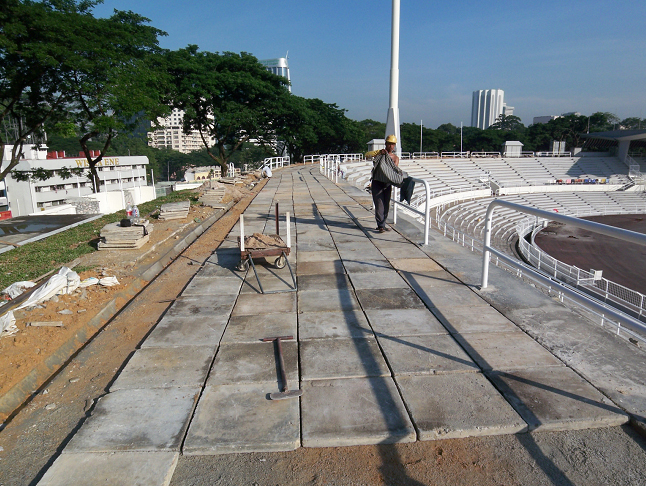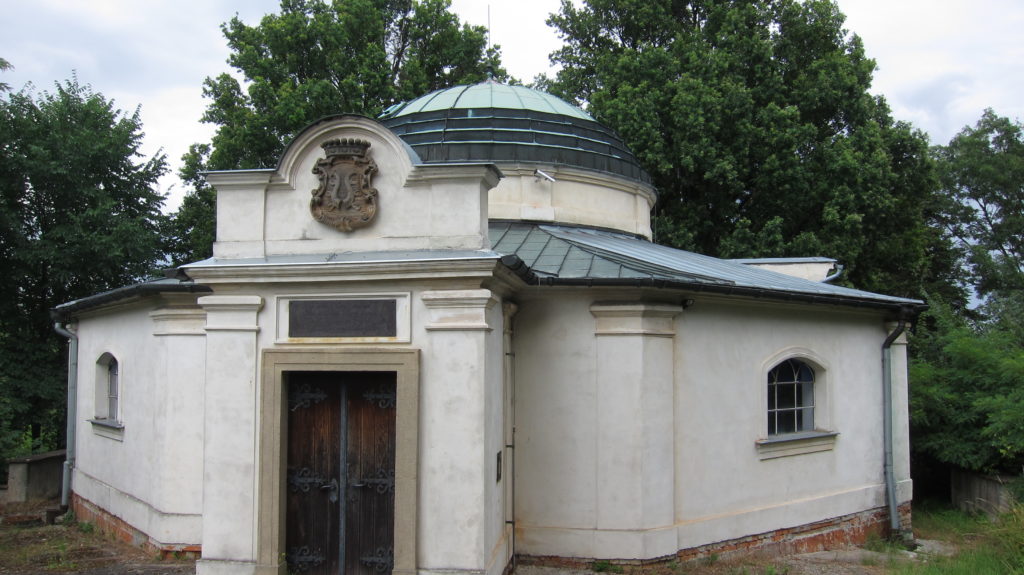-
PRESS RELEASE: Stopping the countdown to catastrophe for world heritage
Posted on April 15, 2016
INTO members, the Cross-Cultural Foundation of Uganda, hope that by teaching children about the importance of heritage, the UNESCO listed Tombs of Buganda Kings at Kasubi will not be wrecked again by fire
Globally-renowned heritage leader warns that apathy towards our world heritage poses a greater risk to it than climate change, war and conflict or natural disasters.
In her first major speech (Monday 18th April) as Chairman of the International National Trusts Organisation (INTO), Dame Fiona Reynolds, former Director-General of the National Trust and Master of Emmanuel College Cambridge, will outline her stark warning on World Heritage Day. In the speech she will also call for a global commitment to a ten-year plan to increase awareness of the social, spiritual and economic value of international heritage sites
Dame Fiona will highlight in her speech the imminent threats to world heritage and the role that the world’s biggest and broadest heritage membership group can have in saving it.
She will call for UNESCO, WWF and others to join with INTO to commit to a 2025 strategy that will both highlight the benefits of a thriving heritage sector and look at innovative ways to help countries and territories tackle threats on the ground.

Work being undertaken by the National Trust of Fiji in the World Heritage Town of Levuka after Tropical Storm Winston in February 2016
She will say : “Our INTO members are the canaries in the coal mine. From Fiji to South Korea and Canada to Uganda, our member organisations defend some of the world’s most special places. They are the ones who can see every day and at first hand the effects of climate change, bad planning and apathy towards heritage.”
“I asked all of our 66 member organisations that constitute INTO across the world what they saw as the greatest threat to world heritage. I expected climate change, war and conflict or even tourism to be their response. But there was one resounding and clear answer from them – apathy on behalf of both governments and people.”
“World Heritage status is very important but only the tip of the iceberg – less than one per cent of the earth’s surface is designated a World Heritage Site. Even then a recent WWF report showed that half of our natural world heritage sites are under threat from development and exploitation. These are the most notable heritage sites on the planet: if we can’t protect them, what on earth is going to happen to the rest?”
“The danger is clear. Unless we act and work towards significantly changing public and official attitudes to heritage, then by 2025, largely through neglect and apathy, we risk letting a large proportion of our built and natural heritage disappear.”
Examples from across the INTO network:

Reinstating the original flagstones which had been removed for safekeeping, Badan Warisan Malaysia
Martindale Hall, South Australia
Entrusted to the nation by a donor in the 1950, the future of Martindale Hall, South Australia, has been in doubt for the past few months as the local government decided to sell it off to a property developer. Inspired by their visit to Wimpole Hall during the INTO conference last year, the National Trust of South Australia is about to start working together with the international National Trust movement on finding a viable future for the property as a heritage-based tourism attraction utilising the buildings and grounds to create a unique destination celebrating its cultural and agricultural heritage.Merdeka Stadium, Malaysia
“Knowing the value is crucial in understanding the preservation and conservation of heritage … I see Merdeka as more valuable than my life because it was there that Tunku proclaimed Independence. It should be taken as a sacred place and I would attribute any attempt to destroy Merdeka Stadium as a sacrilegious act.” Tan Sri Ahmad Sarji, President of Badan Warisan MalaysiaWhen Prime Minister Tunku Abdul Rahman, proclaimed Malaysian Independence on 31st August 1957, he stood in the middle of the Stadium field and shouted out “Merdeka” seven times. This scene, often shown on film and in print, is etched on the psyche of all Malaysians. Nevertheless the stadium was nearly demolished in the 1990s. It was the National Trust, Badan Warisan Malaysia, that was able to help save Merdeka as part of a public-private partnership and today the stadium has a new lease of life for sporting events and concerts alongside “The Road to Nationhood” museum.

The National Trust for Jersey took to the streets to thanks supporters, Love Plémont, 2014
Plémont, Jersey
The Trust Trust for Jersey has been fighting for years to address coastal blight. Since the 1930s, the coast at Plémont had been scarred with the development of a series of holiday camps. When such holidays went into decline the site became vulnerable to redevelopment proposals commencing with an application in 1998 for 117 residential units.In January 2000, the Trust began campaigning for the site to be “returned to nature”. Eventually the ‘Love Plemont’ project – after many ups and downs – resulted in the safeguarding of 11.3 acres of coastal headland in 2014 which is now slowly being returned to nature.
“There is greater public awareness but this is not necessary reflected in political actions or policy”, says Charles Alluto, Director of the National Trust for Jersey.
Bickenbach country house, Cochabamba, Bolivia
Sdenka Fuertes, a young Bolivian architect, received death threats when trying to save and protect the Bickenbach country house in Cochabamba. Built in the Moorish style for the German family of Ernesto Bickenbach, the house and its garden setting became neglected and at risk of redevelopment. After a lengthy and menacing battle, the Bolivian Society for Historical Studies, Heritage and Restoration lobbied for the house to be expropriated and put to cultural use for the benefit of the city. The society also successfully used ICOMOS’s 1981 Florence Charter to argue that the historic garden could not be separated from the house which accompanies it and have managed to keep the site intact for future generations.National Planning Policy Framework, England
Four years ago, the National Trust (England, Wales and Northern Ireland) ran a successful campaign against government’s plans to unpick England’s planning legislation. The threat has not gone away however and the system is still in jeopardy today. The Trust is concerned about a range of government initiatives which threaten to undermine some of the changes won back in 2012, such as the pressure on Green Belts to be allocated for housing (Christchurch has reduced theirs by 6% and Newcastle-Upon-Tyne by 9%), the incorrect application of policies designed to protect Areas of Outstanding Natural Beauty and the recent decision to grant permission for a large potash mine in the North York Moors National Park.
The tomb writer Marie von Ebner-Eschenbach, the ground-breaking (literally!) pilot project of the Czech National Trust
Back in 1907, Sir Robert Hunter, one of the National Trust’s founders, expressed what he saw as the Trust’s role within the broader debate on land use. He talks about the efforts of all three founders to influence parliamentary bills proposing development on common land or the construction of railways through areas such as Snowdonia and the Lake District and comments on the young National Trust that ‘Its work is by no means confined to the purchase of Places of Interest and Beauty. It fosters action to protect such places, to ward disaster and to stimulate municipal and private opinion’.
Czech National Trust
“The Communist era was damaging to heritage in Czechoslovakia. It left properties uncared for and instilled in people a feeling that heritage had nothing to do with them; it was for the state to care. The big challenge is to reconnect people with their heritage and restart a culture of volunteering” says Chairman, Dr Irena Edwards.Facts and figures:
- 45% of local authorities are considering selling or passing on management of green space to others (State of UK Public Parks, Heritage Lottery Fund, 2014)
- Canadians have lost more than 20% of their heritage places in the last 30 years (National Trust for Canada)
- Twenty rural villages are destroyed by developers every day (Ruan Yisan Heritage Foundation, China)
- 90% of trendy bars and restaurants of the five major US cities are in historic buildings (National Trust for Historic Preservation)
- FAI ‘Spring Days’ opens 900 places normally closed to the general public in 380 towns across Italy (Fondo Ambiente Italiano, the Italian National Trust)
- Over 93% of all Irish schools are currently participating part in An Taisce the National Trust for Ireland’s Green School programme
Notes to editors:
Dame Fiona Reynolds will be speaking at Emmanuel College, Cambridge on World Heritage Day, Monday 18 April, at 10.30am – do contact us if you would like to attend.
If you would like a copy of Dame Fiona’s speech or to arrange an interview or further background briefing then please also contact us.
Biography
Dame Fiona Reynolds DBE became Master of Emmanuel College, Cambridge in 2012. She came to the college from the National Trust, of which she was Director-General from 2001-2012. During her time at the National Trust she made it warmer and more welcoming, bringing the houses to life and raising the profile of the Trust’s work in the countryside.Before becoming DG of the Trust, she was Director of the Women’s Unit in the Cabinet Office (1998-2000), Director of the Council for the Protection of Rural England (now Campaign to Protect Rural England, 1987-98) and Secretary to the Council for National Parks (now Campaign to Protect National Parks, 1980-87). Fiona was also a volunteer with the National Trust from the mid-1980s until the late 1990s, first as a member of the Thames and Chilterns Regional Committee and later as an elected member of Council. She chaired the Sutton House Local Committee in Hackney.
Fiona is the Senior Non-Executive Director on the Executive Board of the BBC, a Non-Executive Director of Wessex Water, and chair of Green Alliance and the Cathedrals Fabric Commission for England.
Fiona was appointed CBE for services to the environment and conservation in 1998 and DBE in 2008. She is married with three daughters and lives near Cirencester when not in Cambridge. She loves walking, reading, classical music and opera.
International National Trusts Organisation
INTO was established in 2007 as a permanent focal point for the movement and is now the leading authority on the work of National Trusts worldwide and the issues affecting these community-based, non-governmental conservation organisations.Since the establishment of the first ‘National Trust’ in 1895, the movement has grown to include a range of countries and INTO now has sixty six members from Australia to Zimbabwe! Each is different, but each faces similar challenges and opportunities: increased pressure on land and landscapes, economic volatility and remaining relevant in an ever changing society.
The overarching mission of INTO is to promote the conservation and enhancement of the cultural and natural heritage of all nations for the benefit of the people of the world. It is the umbrella body for the family of National Trusts and similar organisations around the world that come together to share experience and expertise, to grow the capacity of existing Trusts and establish new ones in countries where they don’t currently exist, and to act as a global voice on international heritage matters www.intoorg.org.
World Heritage Day
International Day for Monuments and Sites (or World Heritage Day) is celebrated on 18 April every year. It aims to raise public awareness about the diversity and vulnerability of the world’s built monuments and heritage sites (not just those listed by UNESCO) and the efforts required to protect and conserve them. This year’s theme is the heritage of sport www.icomos.org.

 44 (0)20 7824 7157
44 (0)20 7824 7157